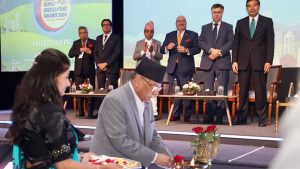
Dengue Surge: 10 Districts Alone Have 87 Percent Infection in Nepal
In a concerning development, Nepal has witnessed a significant surge in dengue fever cases, with more than 5,000 people infected in the country since January. According to the Epidemiology and Disease Control Division, Sunsari district stands out as the most severely affected area, with over half of the reported cases concentrated there. Out of the total 5,688 dengue infections recorded, Sunsari district alone reported a staggering 3,486 cases.
Division Director Rudra Prasad Marasini attributed the spike in infections to people’s recklessness, particularly their negligence towards maintaining proper sanitation amidst continuous rainfall. The Aedes aegypti and Aedes albopictus species of mosquitoes, responsible for transmitting dengue, breed in clean water. Their eggs hatch into larvae and then mature into adult mosquitoes, which transmit the disease through their bites. Marasini stressed the urgent need for removing stagnant water around households to prevent mosquito breeding and control the alarming rise in dengue cases.
The increase in cases has been swift, as just a week ago, there were 4,619 reported cases of dengue in Nepal. Within the span of a week, this number rose to 5,688, indicating the severity and rapidity of the outbreak.
Among the 10 most affected districts, besides Sunsari, are Dhading, Kaski, Darchula, Kathmandu, Sankhuwasabha, Myagdi, Morang, Kanchanpur, and Jhapa. Kathmandu reported 96 cases, and Jhapa reported 56 cases. The Koshi Province has been hit the hardest, with 3,821 dengue cases, while the Madhes Province has the lowest number of cases, with 26 reported infections.
Tragically, four individuals have lost their lives to dengue fever in Nepal since the beginning of the year, highlighting the severity of the situation and the urgent need for effective public health measures to combat the outbreak.
Authorities are urging residents to take preventive measures seriously, including removing standing water and maintaining clean surroundings, to control the spread of dengue and protect public health. Increased awareness and community involvement are deemed crucial in overcoming this health crisis.
As the situation unfolds, health officials and authorities are closely monitoring the outbreak and implementing measures to curb the spread of the disease, with hopes of preventing further casualties and reducing the overall number of dengue infections in Nepal.















Comments